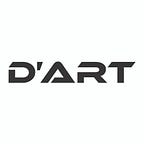Allying The Senses Through Visual Retailing
Visual merchandising plays a major role in delivering experiences while retailing in the consumer’s cerebrum. The visual elements start a perceptual process by exposing consumers’ senses to the products placed in different fixtures. Subsequently, it leads to gaining attention and provoking purchase behaviour. Setting the context aesthetically attracts window shoppers through pleasing merchandising designs. Besides window displays, in-store decorations also encourage consumer walk-ins, comfort, and convenience leading to a better shopping experience. Estimating the stimuli-level, planning, and development of different elements and attributes should be done accordingly.
FACTORS AFFECTING THE ALLIED SENSES
There are two types of factors that affect the sensual provocation of purchase behaviour via visual merchandising -
- Internal Factors — Hedonic needs to mood regulations to social status, all of them are included in internal instincts that drive purchase intellect. Eyeballs are needed to be caught along with feelings combining the senses (human ones) for incommensurable cerebration.
- External Factors — Visual storytelling through pervasive creativity encourages visual stimuli whereas store ambience and socio-cultural factors affect the decision behaviour and store strolling. In the current times here safety measures are top priority, following the safety SOPs are more pivotal for mere entrance.
BIG BOXES
The emergence of big box stores or superstores has made the shopping perception wider as different categories are infused with each other at the same place, giving consumers more options to buy from. Different kiosks and retail merchandising units (RMU) are installed to provide a more enduring experience. Locations at which these giant retail boxes are opened play an important role in conversions with demographics. Brands are placed according to gentry as not all consumers of different social statuses go for premium brands. The markets are also distinguished according to classes — Lower, Middle, Premium; therefore, the retail merchandising and branding spaces.
As today’s consumer wants comfort and convenience laced with selective options and entertainment. Viewing the future protocols, the world’s e-commerce giant has recently launched a cashless store in the States, where the consumer has to simply put the products in his/her basket and everything will be cashed up as soon as he/she steps out of the store via digital payments.
PRINCIPLES USED WHILE DESIGNING VISUAL RETAIL
The five principles of displaying that help in building up the experience involving the five senses:
● Balance — It involves the weight of elements and equilibrium betwixt both sides of the display. The two types of balance: Traditional and Informal — commemorates quality, expense, colour schemes, and effect of lighting in a comprehensive way.
● Emphasis — It’s the point of initial eye contact. Eye movements flow through the formulation of a focal point by its size, colour, and position.
● Proportion — The ratio of different parts of the display is known as proportion. Adjoining distances, sizes, amounts, and degrees comprehensively with each piece of merchandise is considered the relationship to all other merchandise.
● Rhythm — It leads the viewer from the dominant object to the subordinates ones. The experience flows through it and if it breaks up, it can affect the decision of purchase. You can’t risk that, though.
● Harmony — It can be nutshell-ed as the feeling and consistency in the mood. It can incorporate every other principle in it. Without harmony, there will be no enticement leading to lower conversions.
The three types of harmony are —
a} Functional -It deals with the physical working of anything placed in the design of the merchandise.
b} Structural — Fitting the pieces together, in a correct way is what all comes under structural harmony. It helps in both creating and setting the mood.
c} Decorative — It only includes the parts that are used for decorative purposes in a display. Props are also used to set the atmosphere as they all add up to the pre-decided theme.
